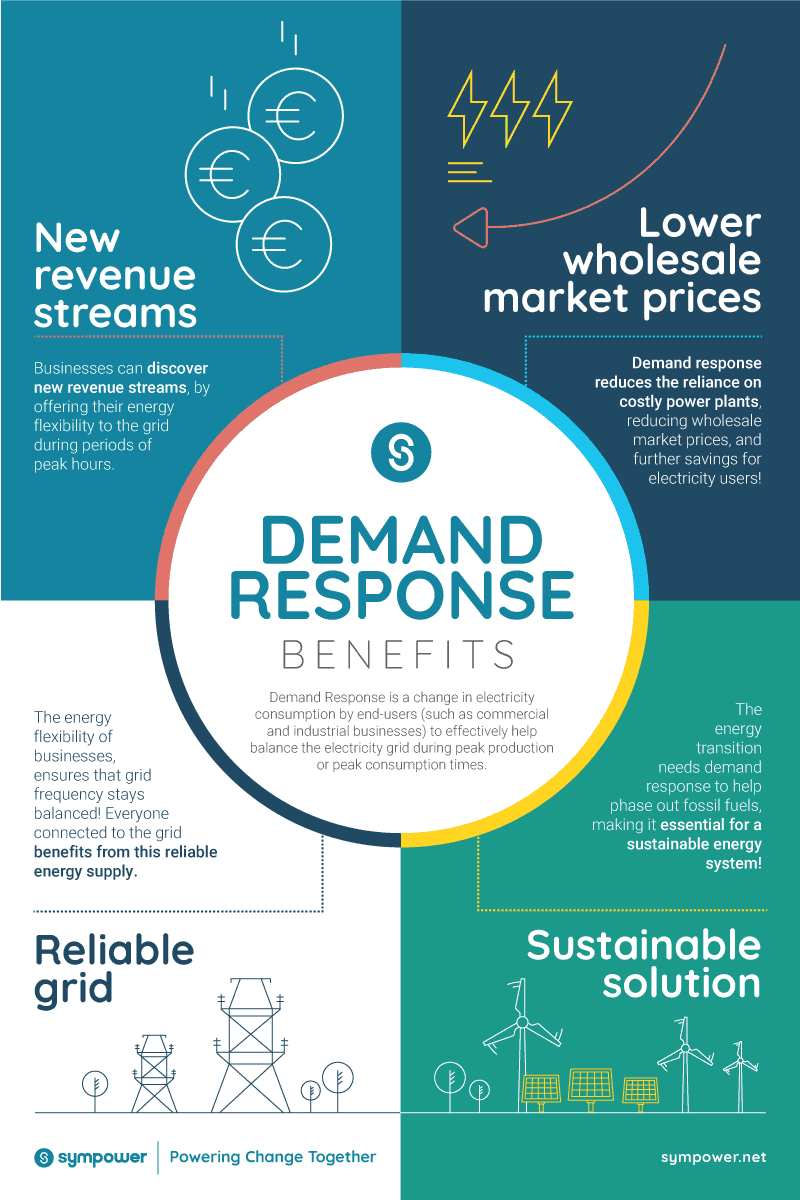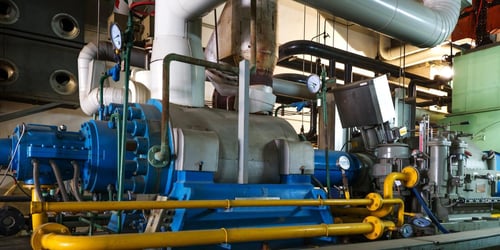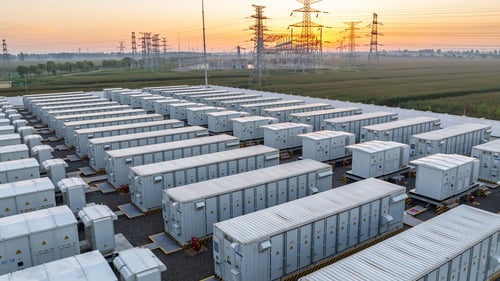What is Demand Response?
.jpg?width=768&name=Article%20Thumbnails%20-%201920x1080%20new%20website%20(28).jpg)
Jump to:
- Demand Response: Everything You Need to Know
- Demand Response Definition
- Demand Response vs. Demand-side Flexibility
- How Does Demand Response Work?
- Benefits of DR
- Demand Response in Action
Unlock New Revenue Streams with Demand Response
Check out our essential guide to energy flexibility.
Everything You Need to Know
It’s hard to understate the complexity in generating and distributing energy. For power systems to work correctly, there has to be a near-perfect balance of electricity being injected and withdrawn from the grid at all times. But finding this balance can be hard, as demand and supply for electricity are constantly fluctuating. Thankfully, demand response services help to stabilise the grid, by ensuring supply and demand stay balanced. Whether you call it demand response or demand-side flexibility, knowing what these demand response services are and how they work is crucial for understanding the future of power systems around the world. That’s why we are going to take you through the key things you need to know about demand response.
Demand Response Definition
Before we jump into it, let’s ask the most obvious question: What is demand response? It can sometimes feel like a highly complicated topic. But the most simple demand response definition is this:
Demand response (DR) is a change in electricity consumption by consumers (such as commercial and industrial businesses) to help keep the supply and demand of electricity in balance.

For an electricity grid, the supply and demand have to be kept very closely in balance. The way to measure the balance on the grid is to measure the frequency. The aim is to maintain a frequency of 50Hz. If this balance is not maintained, it can lead to issues like blackouts, as well as causing damage to devices connected to the grid.
In the past, fossil fuel power plants (coal and gas) were the only providers of balancing services. When demand increases, they simply burn more fuel to ensure a stable grid. But renewable energy sources are reliant on external factors (wind and sun). It can be challenging to rapidly change the amount of energy generated to meet demand. It’s not possible to produce more solar energy on an overcast day. For that, an alternative method of reacting to changes in demand and supply is necessary.
That’s why there’s a growing interest in how that grid stability can be maintained through demand response. Through DR, consumers are given a signal to decrease or increase their energy usage to restore balance on the grid when demand and supply shift.
Demand Response vs. Demand-side Flexibility
When researching the topic of demand response services, you might have come across a number of different terms: demand response, demand-side flexibility, or even demand-side response. You might be wondering what the difference between them all is.
It’s a good question, with an easy answer. All these terms have basically the same meaning. In general, they refer to demand-side services; responses on the demand side (i.e. electricity consumers), to help create a balanced electricity grid. Different terms may be used in different markets all over the world. The terms can change depending on the country, market or even business, but all describe the same demand response services.

How Does Demand Response Work?
Now that we know what DR is, it may leave you wondering how DR management works. Well, it starts with consumers. When they participate and agree to have the energy consumption of their assets changed from time to time, demand response becomes possible. It’s the flexibility of these consumers and their assets that allows grid frequency to be maintained. But first, that flexibility has to be discovered.
That’s where independent aggregators come in. Independent aggregators like Sympower are the experts behind managing DR resources. They are experts in first finding and then unlocking flexibility in complex processes. By linking these energy assets to their demand response management system, independent aggregators can temporarily change the energy consumption of these assets to meet grid demands.
Independent aggregators can also help ensure that all types of businesses can participate in demand response. Sometimes a small business will want to partake in DR programs, but its assets will be too small to make an impact on grid stability. In these cases, independent aggregators group together similar assets across multiple businesses, so that they can collectively have an impact and the businesses can still benefit from providing DR services.
Independent aggregators can leverage this flexibility through different demand response services to help maintain a stable grid. This is why independent aggregators work closely with transmission system operators (TSOs) whose responsibility is to maintain a stable electricity grid. In turn, flexible assets contribute to a reliable grid system, while also leading to a number of financial benefits for consumers.
Benefits of DR
Demand response empowers consumers to use electricity more intelligently, leading to lower energy bills and enhanced efficiency. This means consumers benefit financially while also supporting a more reliable and sustainable power grid.
- Lower electricity costs
Consumers get paid for participating in demand response programs, where they offer flexibility in their energy use. This not only reduces their overall energy costs but allows them to earn additional revenue. By adjusting their electricity usage during peak times, consumers can benefit financially while supporting a more reliable energy system.
- A more reliable grid
Demand response lowers the likelihood of unplanned power outages. Offering the flexibility of your energy assets helps ensure that grid frequency can be maintained, avoiding major problems. By participating in demand response services, you also reduce the inconvenience for all who are connected to the grid.
- Lower market prices
Demand response reduces the reliance on costly power plants during periods where electricity demand is high. This benefits the wholesale market prices and eventually translates into further savings on electricity bills for customers.
- Accelerating the energy transition
The energy transition will see traditional fossil fuels phased out in favour of renewable energy. However, this poses a unique challenge given the intermittent nature of their production, and limited control over their generation. This is an issue to urgently overcome amid the rising demand for renewable energy. By making the grid more reliable and allowing fossil fuel plants to be safely phased out, DR is crucial for a successful energy transition towards renewables. It’s going to play a vital role in helping countries reach their climate targets.

Demand Response in Action
Misawa Homes is a sawmill located in Finland. Here they produce high quality lumber to export to Japan. As one of Sympower’s customers, they’ve been able to unlock the flexibility of their processes in order to earn revenue and save on their energy costs.
During the milling process, Misawa Homes uses industrial fans to dry the lumber before it’s shipped overseas. But these fans don’t have to be active throughout the entire drying process. This makes them the perfect asset for demand response. Since 2017, Sympower has periodically shut down these fans during the wood drying process, to help stabilise the Finnish grid. Despite the fans being shut off, it’s had no effect on how long it takes for the wood to dry.
More recently, Misawa Homes has expanded the ways in which they utilise their flexibility. This means Sympower has also started adjusting the amount of power the fans use. Rather than completely turning them on and off, we manage the energy they consume too. Not only does this expand the opportunities Misawa Homes has in participating in demand response services, it’s also helping them to save money. By taking part in demand response with Sympower they earn revenue, and made 10% in energy savings through managing their assets flexibly. This means they maintain their efficient business processes, while gaining the benefits of DR.
Other articles you might find interesting
-
 Demand-side flexibility23 March 2022
Demand-side flexibility23 March 2022District Heating Operators: New Revenue From Grid Balancing
Read more -
 Demand-side flexibility23 March 2022
Demand-side flexibility23 March 2022Five Myths About Demand Response, Debunked!
Read more -
 Demand-side flexibility23 March 2022
Demand-side flexibility23 March 2022BESS & Demand Response, What’s the Connection?
Read more -
.jpg?length=500&name=Article%20Thumbnails%20-%201920x1080%20new%20website%20(4).jpg) Demand-side flexibility23 March 2022
Demand-side flexibility23 March 20223 Things to Look for in a Flexibility Service Provider
Read more -
.jpg?length=500&name=Article%20Thumbnails%20-%201920x1080%20new%20website%20(35).jpg) Demand-side flexibility23 March 2022
Demand-side flexibility23 March 2022smartEn Executive Director Michael Villa on the future of energy flexibility in Europe
Read more -
.jpg?length=500&name=Article%20Thumbnails%20-%201920x1080%20new%20website%20(34).jpg) demand response23 March 2022
demand response23 March 2022Getting Europe’s Grids Fit for the 21st Century - Interview With SmartEn’s Executive Director Michael Villa
Read more -
 Demand-side flexibility23 March 2022
Demand-side flexibility23 March 2022Empowering Industry through Energy Flexibility - Q&A with Raphaël Gras
Read more -
 demand response23 March 2022
demand response23 March 2022EU elections: Opportunity or Risk for Demand-Side Flexibility? - Q&A with Mathilde Chareyron
Read more -
.jpg?length=500&name=Article%20Thumbnails%20-%201920x1080%20new%20website%20(5).jpg) Knowledge23 March 2022
Knowledge23 March 2022How to Earn Revenue with Demand Response
Read more -
.jpg?length=500&name=Article%20Thumbnails%20-%201920x1080%20new%20website%20(6).jpg) Demand-side flexibility23 March 2022
Demand-side flexibility23 March 2022Five Times Demand Response Saved the Grid
Read more